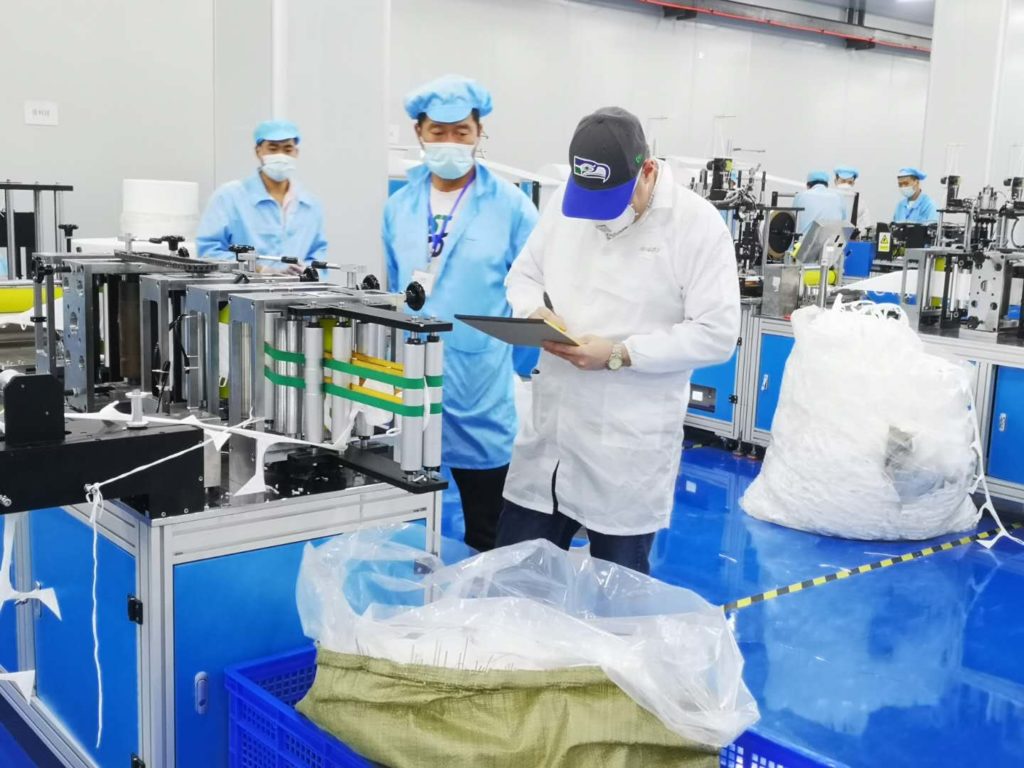All About the PPE Supply Chain with Cameron Johnson

Cameron Johnson pictured wearing a KN95 mask.
Cameron Johnson is a partner at Tidal Wave Solutions in Shanghai, an adjunct faculty member at NYU, Shanghai, and a University of Washington alumnus. Due to his unique set of skills, Johnson helped formulate the United States’ Personal Protective Equipment (PPE) purchasing plan, for the COVID-19 pandemic. His contributions are discussed in a CBS Frontline episode titled: America’s Medical Supply Crisis. UW Foster MSCM students were able to have a Zoom conversation with Johnson, on his expertise on the American PPE supply chain. Here’s what they learned.
1. COVID-19 Supply Chains Are Here to Stay
Most experts, like Dr. Fauci, who is one of the world’s leading experts on infectious diseases and a member of the White House’s COVID-19 taskforce, predict an end to the COVID-19 pandemic by the end of 2021. Whether or not this end comes about as a result of herd immunity or a widespread vaccination, one thing is clear, PPE supply chains are here to stay well beyond that. This includes supply chains for items such as gloves, KN95 masks, hard hats, respirators, and full bodysuits. “Some of those lines have been booked out till 2022,” elaborates Johnson.
2. Inclination Towards Autarky
The COVID-19 pandemic further worsened economic relations between the U.S and Chinese economies, which were already feeling the strain of the earlier trade war catalyzed by President Trump’s tariffs in 2018. For example, trade data shows that in March 2020 Chinese imports in the U.S were valued at 19,805.4 units, in comparison to the 31,175.6 units in a pre-COVID world in March of 2019. This decrease partly stems from the President’s harmful rhetoric around the virus’s origins’ in China. Furthermore, PPE shortages that were felt earlier in the pandemic in the U.S can be linked to a distrust in Chinese manufacturing.
“One of the trends that have happened particularly since the summer, groups particularly medical and governmental, they want it on the ground in the United States. So, what you’ve seen is a void being filled in by hedge funds, P.E’s, wealthy individuals, who are essentially buying these products [PPE’S] outside of the U.S, assuming the risk for said products and putting them in the U.S and then charging a premium for the risk they incur. We’ve seen anywhere from a 100% to 400% upcharge,” Johnson explains.
All in all, there has clearly been an inclination towards autarky or self-reliance in the global trading sphere.
3. Changing the Rules of the Game
International supply chains are not the only ones feeling the brunt of the COVID-19 pandemic, so are domestic ones. In the U.S, one particular trend has been strict guidelines from PPE manufacturers. “From the factory side, they will not talk to you unless you have a purchase order, letter of intent, and a proof of funds,” adds Johnson. One of the largest purchasers of PPE in the U.S is hospitals, and historically the medical supply chain has never required hospitals to do the aforementioned when purchasing routine medical supplies. Hospitals, don’t always have liquid funds readily available for all the supplies they need to purchase.
Looking Ahead
In March 2020, virtually all supply chains in the world shattered, as a result of the COVID-19 pandemic. As the world continues its return to normalcy, it’s clear that it will take leaders in the supply chain industry to get there. Apply today, to join our next cohort at Foster MSCM, and be among those leading the world!

Check out, the Foster MSCM program to learn more about supply chain!
Written by Maryam Noor
MSCM Writer & Content Strategist
[email protected]
